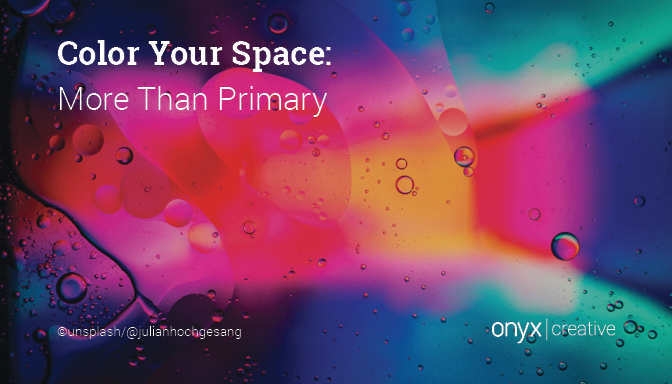by Rita Gochberg
Advancements in mass transit and affordability of private transportation, urban planning, segregated living, working and shopping environments, and the establishment of low-density dwelling neighborhoods, all give rise to automobile dependency and suburban sprawl. In the early 1980s, the New Urbanism movement was established in the U.S. as a response to the detrimental effects of urban sprawl, becoming influential in aspects of urban planning and municipal land-use perimeters. The following study evaluates the sum of the significant impacts of suburban sprawl, establishes common patterns between urbanist methodology and evolution of healthcare systems, assesses population living preferences among two major cohorts, baby boomers and millennials, and proposes a pathway to better integration of healthcare services within the urbanist environment.
The study builds upon three methods; literature review, encompassing studies and data on urbanism, future healthcare framework developments and viable aging in place as a solution to rapidly growing elderly population; and evaluating living preferences among various age groups across the country through a survey assessment. The review of New-Urbanism methodology compared to current healthcare planning demonstrates parallel approaches of wellness-focused community connections; however, current healthcare facility developments in urban environments largely focus on healthcare facilities as large scale financial anchors and lack in successful implementation on a microscale within the communities, which would improve accessibility.
Some History of Urban Sprawl
The term urban sprawl, or suburban sprawl, is utilized in categorizing the rapid growth of metropolitan areas. While there was some urban expansion with progress of public transportation during the late 19th and early 20th century, mass affordability of private transportation post-WWII was the major component propelling the development of the suburb. Urban planning began to center on zoning separation, rather than the integrated urban communities dominating the city development in prior decades. Segregating living, working and shopping environments, and establishing low density wide-spread dwelling neighborhoods, gave rise to extreme automobile dependency and suburban sprawl (Frumkin, 2002).
The sprawl phenomenon facilitates increased racial and economic disparity. As individuals began migrating away from the city core, so did their tax dollars. More often than not, the city’s poorest residents were left behind creating a vast economic gap and location based stratification. In addition to social segregation, the reduced financial sources in the cities directly affected education, crime prevention, maintenance and upkeep (Soule, 2006). In a study conducted to evaluate the impact of suburban sprawl on upward mobility, a direct relation was established. Compact mixed use and residence areas such as developed urban environments are attributed to increased job accessibility, higher income opportunities, economic resilience and reduced unemployment rates. All these contribute to general upward mobility in the population by approximately 41% (Ewing, Hamidi, Grace, & Wei 2016).
At one time many Americans got to their destination by foot. People lived locally and often didn’t need to venture past their immediate environment (Farr, 2008). In present time we walk as little as four minutes a day (Lawton). Ewing, Schmid, Killingsworth, Zlot and Raudenbush (2008), in their study evaluating 448 countries and 83 metropolitan areas, demonstrated that suburban form is directly tied to some health-related conditions promoted by reduced physical activity. Conditions such as weight gain, hypertension, non-insulin related diabetes, colon cancer, osteoarthritis, osteoporosis, and coronary heart disease. Between 1991 and 2007, the percentage of adult obesity in the U.S. increased significantly, from averaging below 20% to having only a single state, Colorado, measure under 20%. While there are additional known factors contributing to obesity among children and adults, a six-year analysis of Massachusetts residents demonstrated direct correlation between higher body index average and living in suburban car-dependent areas of Boston, versus lower averages for residents living in a less car dependent urban area (Wirth, 2016). Metropolitan expansion has also been found to be the cause of several additional issues tied to constant reliance on automobiles. As we spend more time on increasingly crowded roads, with increasingly long commute times, we observe health related effects such as back pain, cardiovascular disease and stress (Franklin, 2002).
New Urbanism: Background and Philosophy
The New Urbanism movement was established in the U.S. in the early 1980s, gradually becoming influential in aspects of urban planning and municipal land-use perimeters. The new urbanist movement operates under the conviction that our physical environment has a direct impact on facilitating happy, healthy and prosperous lives. This movement focuses on a wide range of scales when it comes to city planning and development and presents a well-planned community as a social engine, improving community health and resilience as well as promoting sustainability and equality (Congress for the new urbanism).
In some successful instances, suburbs, which are located in direct proximity to the core city when constructed, formed a multitude of economic centers and encouraged job migration through the metropolitan region. Those suburbs that took advantage of such opportunities became economic drivers of their own and distinguished themselves as desirable destinations (Dunham-Jones & Williamson, 2011).
Methods of Implementation
New Urbanism is based on several principles, forming a road map to implementation in city planning, development and policy implementation. All these principles have a combined goal of creating sustainable communities that facilitate human prosperity, health and sustainability (Urbanism principles) such as:
Walkability and Connectivity – Pedestrian-friendly cities are key to promoting walking communities. An optimal plan places individuals within a ten-minute walk to their destination and needs. Interconnected networks of street grids with varying hierarchy facilitate safe and pleasurable walking.
Mixed-Use, Mixed Housing, diversity and increased density – A single site will consist of a mix of shops, offices, apartments and homes. The concept of mixed-use is scaled from the individual building to city blocks, facility a variety of residential entry point costs. All commercial, civic and residential buildings are located closer for ease of walking and enabling efficient use of services and resources.
Traditional neighborhood structure – Transect planning with a discernable center and edge, and gradually decreasing densities within a ten-minute walk. This hierarchy boasts an appropriate building and street types for each area along the continuum.
Quality architecture and urban design – Human scale architecture characterized by aesthetics, human comfort and a sense of place with consideration to civic uses and sites within the community.
Green transportation – A network of high quality public transportation connecting cities, towns and neighborhoods and a pedestrian-friendly design encouraging use of personal sustainable transportation such as bicycles.
Sustainability – Reduce environmental impact related to development, energy efficient and sustainable design, as well as utilization of existing resources.
Multigenerational Approach
By 2040, the proportion of people over the age of sixty-five will top 20%, and people under the age of eighteen will make up almost 23% of the population. As a result, the oldest and youngest populations combined will make up almost half of all U.S. residents (American Planning Association).
With the rise of suburban sprawl, multi-generational households were on decline; however, beginning in the 1980s the pattern reversed and multi-generational households have been on the rise, reaching 16.1% in 2008 (American Planning Association, Figure 1).
Millennials and Baby Boomers
Looking at the two biggest generation cohorts at present time, the baby boomer generation and the millennial generation, it is clear that both have a significant impact, at present and future, on housing, community services, access to amenities and quality of life requirements in their living and working environments (Luis, 2015). A 2010 survey conducted for the AARP demonstrated that the two-thirds of the boomers expressed desire to remain in their current suburban homes and communities, and one-third stated that the reason for staying is financial (Luis, 2015). Luis (2015) also relies on a 2010 census data for Washington State to come to the assertion that, while there is a large population of Millennials living in urban centers, a large percentage still resides in the suburbs.
These statements, while true to their time, don’t account for several factors affecting the pace of increased urbanization. First thing to be considered is the particular period of time in which data was collected. 2010 was still a period of economic recession influencing financial decisions of both, boomers preparing for retirement and Millennials entering the recession stricken work force. Additional consideration is demand versus supply. Urban development is not keeping in pace with the demand, forcing many to remain in suburban areas. The age of the data is additional consideration. Seven years of economic growth and market recovery may produce changed preferences and abilities for both age groups.
Aging in Place
The U.S. Centers for Disease Control and Prevention defines aging in place as “the ability to live in one’s own home and community safely, independently, and comfortably, regardless of age, income, or ability level.” This all-encompassing definition has far-reaching implications on personal and community levels. From retrofitting personal property to enable independence, safety and control of individuals’ own personal environment, to community-wide system that will sustain their residents to remain an active member through properly planned environments, policy and support.
Rapid growth of the retired population creates significant concerns with respect to senior’s health and being able to meet demand. Alternative solutions to the traditional setting of nursing homes and assisted living facilities needs to be introduced in the shape of community resources and programs enabling individuals to age in place (McGill, 2013).
A study in New Zealand, seeking to shed light on the meaning of “aging in place” to individuals, conducted interviews with 121 people aging 56-92 from two similar communities. The findings showed that the ability to age in place was viewed as a concept with prevalence in providing a sense of connection, belonging, security and familiarity. Aging in place is not limited to a person’s home but is also closely tied to identify derived from belonging and being an active part of a community (Wiles, Leibing, Guberman, Reeve, & Allen, 2012).
Evolution of Healthcare
The U.S. healthcare system is in the midst of one of its most profound transformations in the past century. As many uncertainties still exist with respect to the direction of our current system, the only absolute is that will need to accomplish greater results with less means (Espinosa, 2012). Healthcare systems are rethinking the traditional hospital structure, disconnected from the community and beginning to think forward and for connections outside of its walls. Medical facilities are opening their doors to create supporting healthy initiatives promoting prevention rather than treatment and serve as community anchors (Silvis, 2014).
Methods of Implementation
Hospitals and health system begin to collaborate on a local level with community organizations and contribute to programs geared towards population health. Many of these programs are still inefficient due to their lack of relation to core issues such as socio-economic conditions and causes of unhealthy behaviors impacted by planning and design of healthcare environments (Alkan, 2014).
Espinosa (2012), in his report “The future of healthcare”, a study conducted in collaboration with multiple healthcare systems and architects across the country to evaluate the direction in which the healthcare industry is shifting. The findings illuminate several key drivers:
Hospitals will become smaller and focused on highest acuity needs. As prevention, integrated care and wellness take center stage, and with advancements in non-invasive procedures, the demand for the traditional hospital setting will continue to diminish. This also propels reduction in redundancy and increase in neighborhood level access. Current systems will begin to integrate and consolidate vertically.
As prevention and wellness take center stage and as the current revenue model of 50-50 split between inpatient and outpatient care shifts, the future will potentially see inpatient care reduced to 15% and outpatient care will dominate at 85%. New models of care will emerge through retail integrated clinics and Accountable Care Organizations (ACO).
Specialized care in profitable and in demand fields will dominate and cater to changing population needs, particularly the older adult generation facing a system unprepared for the rapid increase in demand that will continue to grow in the near future.
Technological advancements such as telemedicine, home monitoring systems, ability to provide point of care testing and data management will have a significant impact on the infrastructure of healthcare and the definition of healthcare services and facilities.
Availability of capital and continuing financial constraints will begin to shift healthcare systems from new construction to renovation and adaptive use. Re-purposing existing outdated facilities that have a solid core is much more financially sustainable. These types of renovations will become an elaborate approach providing mission focused redevelopment.
Emphasis increase on sustainable and energy efficient construction providing manageable operational long-term savings.
Common Patterns
Looking at implementation methods of both, changes in healthcare approaches and new urbanism, several parallel aspects are evident. Expansion of outpatient care and gradual downsizing of inpatient services provides opportunities for smaller scale urban integration within the communities allowing for easier accessibility. The shifting focus towards preventative care and wellness services within the communities integrates seamlessly with new urbanism methodology driving walkable, accessible communities and mixed-use developments. Newer healthcare campuses already discovered the benefits of incorporating retail aspects. However, for the most part, they are still relatively contained within the campuses themselves.
Sustainability and efficient development are also manifested in methodologies of both healthcare planning and new urbanism. Healthcare systems shifting focus towards redevelopment of existing structures and modification of existing facilities is driven by financial considerations and operational drivers, similar to new-urbanist approach for calling focus on minimizing environmental impact related to development and utilization of existing resources.
Integration Methodology
There are several potential integration methods, implementation of which carries multitude of benefits on urban, business and community level of development and promoting the culture of accessible healthy urbanization:
Survey and Results
A survey was administered as part of this study, evaluating the new urbanism concept and integration of healthcare environments. The purpose of this survey was to identify and evaluate current trends and individual preferences among different age groups with respect to community preferences at present and future. The survey participants were categorized into six age groups (Figure 2) and results collected represented, in varying quantities, individuals from a total of forty-three U.S. states (Figure 3).
The results of this survey confirm a closely tied connection between two major cohorts currently dominating the housing and financial markets, millennials and baby boomers. Looking at the six age groups, defined by this survey, it is clear that almost every group is dominated by one or the other. Both, millennials and baby boomers, have and will continue to have a significant impact on how communities and cities are shaped with respect to housing type, proximities, accessibility to various services and amenities, and dictate financial prosperity of an area. All groups responded strongly with respect to their preference to reside in environments conductive of the live-work-play concept, a concept at the core of new-urbanist communities. All age groups expressed strong preference to reduce their dependence on personal vehicles and desire to live in walking accessibility to various amenities and services.
There is a connection between the shifting of the healthcare model toward wellness and preventative care, as it is a response to the changing lifestyle desired by both the millennial generation and by the baby boomer generation. Millennials seek to live healthier and baby boomers are looking towards aging healthier. This is evident in the results, showing an 85% positive response to preferring to live healthier and remain active for longer.
When taking under consideration the potential of relocating to a different city or state, age groups related more to the millennial generation, demonstrating higher potential or desire for relocating than baby boomer age groups. That being said, neither of the age groups dismisses the notion, and while proximity to family or friends is still a significant influencing factor on the relocation decision, it is shown to be of lesser importance than expected prior to this survey.
While is a broad overview and analysis of survey results, there are still potential relationships and data comparison that can be extracted from it. Additional broad topics of discussion are encouraged to examine the correlation between these two cohorts, in order to project towards their effects on the environmental and city scape evolution. This survey is wide reaching with respect to geographical U.S. areas, a broader research is encouraged of more targeted areas, cities or states by age groups.
It is evident that there is a great interconnection between the desired physical environment and lifestyle preferences. These two grand generations do not disconnect between their built environment and its contribution and importance to a healthier lifestyle, but rather see them as a joint concept with a closely tied symbiotic relationship.
Overall, the survey results demonstrated strong connection in overall living preferences among millennials and baby boomers: both cohorts lean towards preferring developed urban environments, accessibility to amenities, reduced vehicle dependence and preference to remain independent in their communities as they age.
This article is based on a research study conducted by Rita Gochberg in 2017/2018 in collaboration with Kent State University and presented at the national Environmental Design Research Association (EDRA) 2018 convention.
Survey Limitations
The nature of the method in which the results were collected also presents several limitations. The goal was to collect data from an uncontrolled and anonymous group of responders of various ages, genders, educational backgrounds, racial identities and locations. While the results of the survey present a relatively consistent response among various age groups they also display some anomalies. While the relative distribution of the quantity of responders from each age group doesn’t vary greatly, the fact that it is not an equal amount per group provides a percentage deviation in the final results. In addition, the nature of the study provided responses across a wide range of areas in the U.S., it does not provide an equal number of responders per area, and finally, due to the method of administration, I had to rely on terminology understanding, personal life experiences and self-classification by the responders.
Note: This paper was prepared in partial fulfillment of Master’s Project in Healthcare Design (Architecture 60198) per Margarita Gochberg, during her graduate years at the College of Architecture and Environmental Design at Kent State University.
References
Alkan, B. (2014). A vision and planning framework for health districts of the future. Perkins+Will Research Journal, 06.02, 57-70. Retrieved from https://perkinswill.com/research-journal-vol-06-02/
American Planning Association. (n.d.) Using smart growth and universal design to link the needs of children and the aging population. Retrieved from https://www.planning.org/publications/document/9148235/
Congress for the new urbanism. (n.d.). Retrieved from https://www.cnu.org/what-we-do/our-issues
Dunham-Jones, E., & Williamson, J. (2011). Retrofitting suburbia: Urban design solutions for redesigning suburbs. Hoboken, NJ: Wiley.
Espinosa, H. (2012). The future of healthcare. Retrieved from DPR Construction website: https://www.dpr.com/assets/docs/the-future-of-healthcare.pdf?/futureofhc
Ewing, R., Hamidi, S., Grace, J.B., & Wei, Y.D. (2016). Does urban sprawl hold down upward mobility? Landscape and Urban Planning, 148, 80-88. Doi:10.1016/j.landurbplan.2015.11.012
Ewing, R., Schmid, T., Killingsworth, R., Zlot, A., & Raudenbush, S. (2008). Relationship between urban sprawl and physical activity, obesity, and morbidity. Urban Ecology, 567-582. Doi:10.1007/978-0-387-73412-5_37
Farr, D. (2008). Sustainable urbanism: Urban design with nature. Hoboken, NJ: John Wiley & Sons.
Frumkin, H. (2002). Urban sprawl and public health. Public Health Reports, 117(3), 201-217. Doi:10.1093/phr/117.3.201
Lawton, K.T. (n.d.). The urban structure and personal travel: An analysis of Portland, or data and some national and international data. Retrieved from RAND Corporation website: https://www.rand.org/content/dam/rand/pubs/conf_proceedings/CF170z1-1/CF170.1.lawto.pdf
Luis, M. (2015). The python now has two pigs: Boomers and millennials. Retrieved from Washington Realtors website: https://www.warealtor.org/docs/default-source/ga-resources/millennials_final.pdf?sfvrsn=0://
McGill, N. (2013). As senior population grows, aging in place gains popularity: Communities conducting outreach. The Nation’s Health, 43(8), 1-16. Retrieved from http://thenationshealth.aphapublications.org/content/43/8/1.2.full
Niedzielski, M.A., & Boschmann, E. (2014). Travel time and distance as relative accessibility in the journey to work. Annals of the Association of American Geographers, 104(6), 1156-1182.
Silvis, J. (2014). Designing for wellness: the healthcare campus of the future. Healthcare Design Magazine. Retrieved from https://www.healthcaredesignmagazine.com/trends/architecture/designing-wellness-healthcare-campus-future/
Soule, D.C. (2006). Urban sprawl: A comprehensive reference guide. Westport, CT: Greenwood Press.
Stuart, M., & Weinrich, M. (2001). Home and community based long-term care: Lessons from Denmark. The Gerontologist, 41(4), 474-480.
Urbanism principles. (n.d.). Retrieved from http://www.newurbanism.org/newurbanism/principles.html
Wiles, J.L., Leibing, A., Guberman, N., Reeve, J., & Allen, R.E. (2011). The meaning of “aging in place” to older People. The Gerontologist, 52(3), 357-366. Doi:10.1093/geront/gnr098
Wirth, A. (2016). U.S. urbanization trends: Investment implications for commercial real estate. Retrieved from CBRE Global Investors website http://cbreglobalinvestors.com/research/publications/Documents/Special%20Reports/US%20Urbanization%20Trends_SUMMER%202016.pdf










































